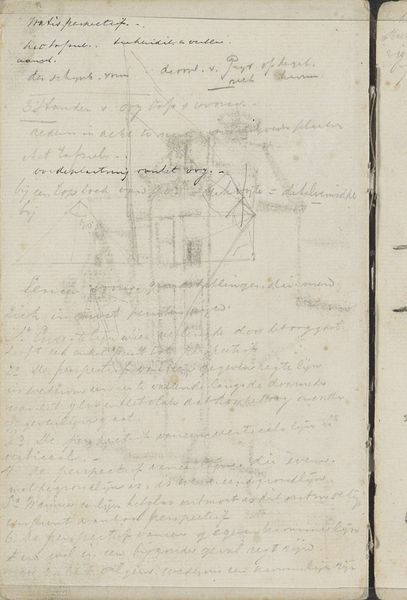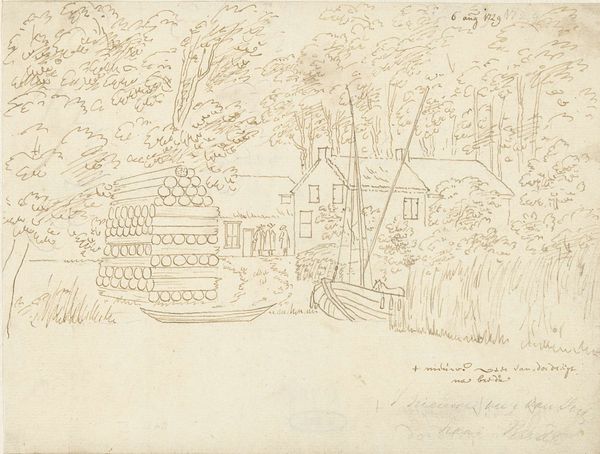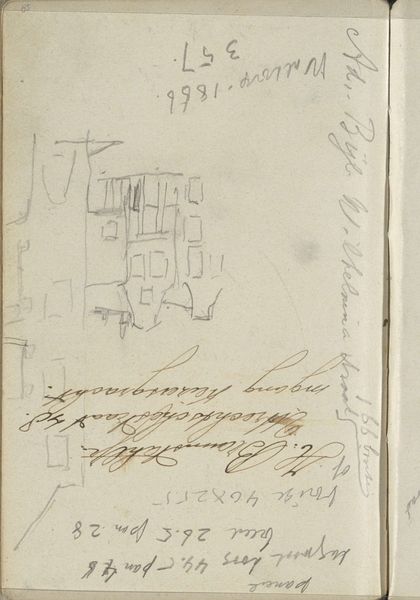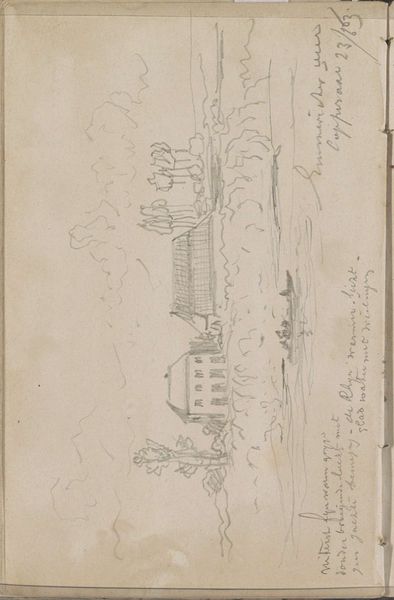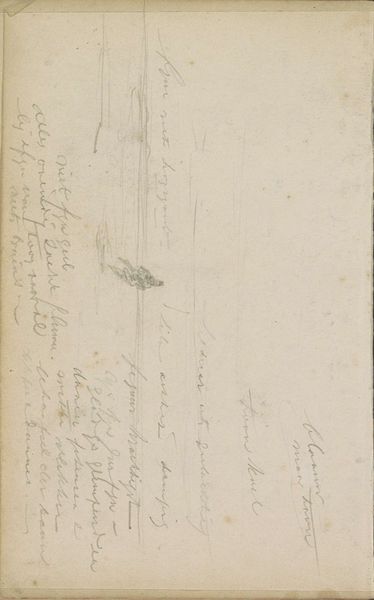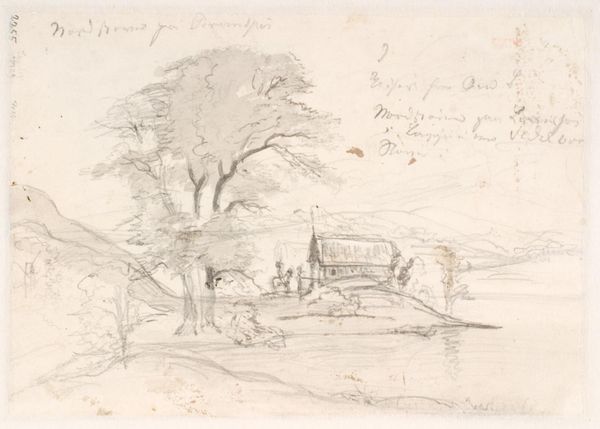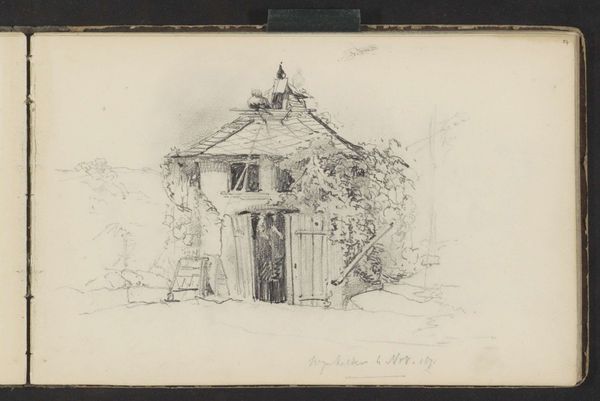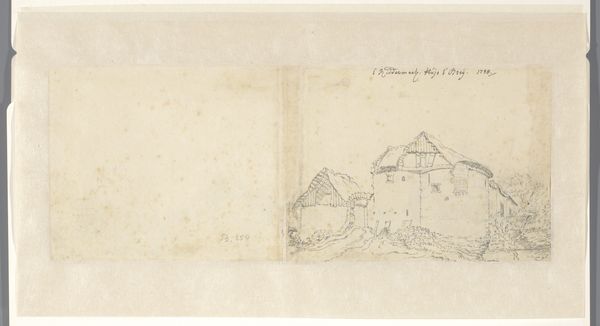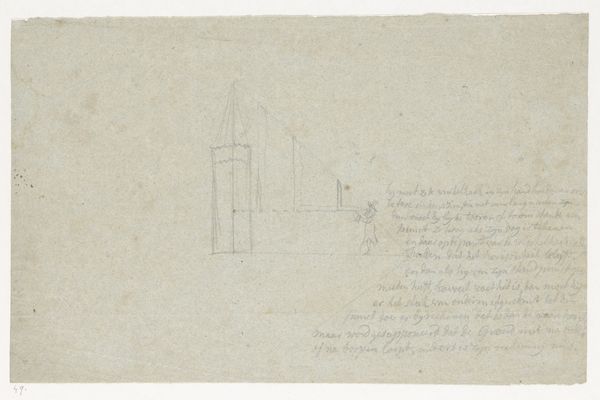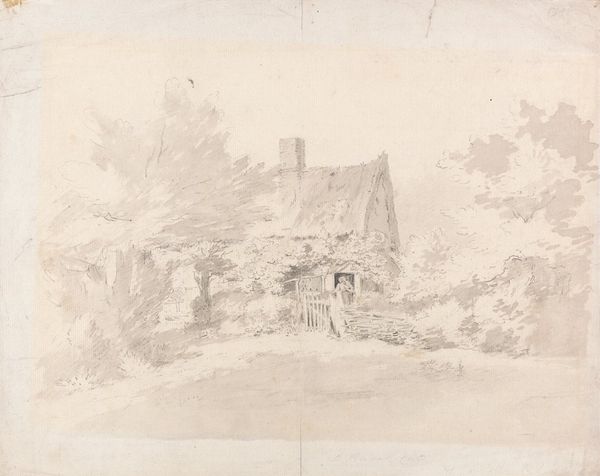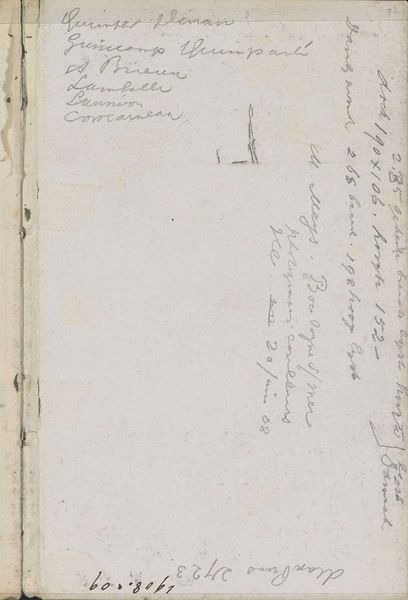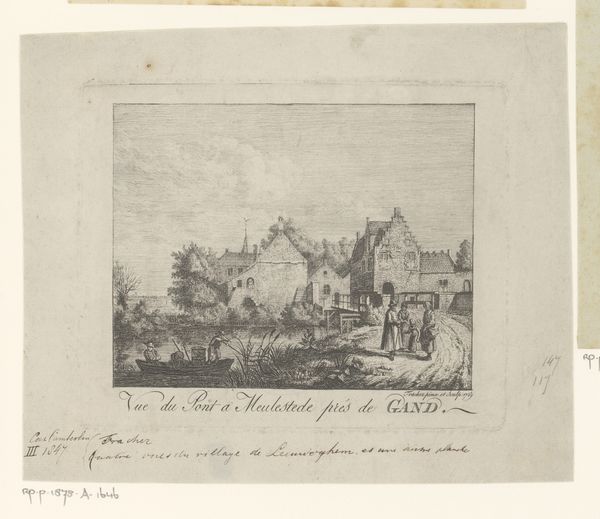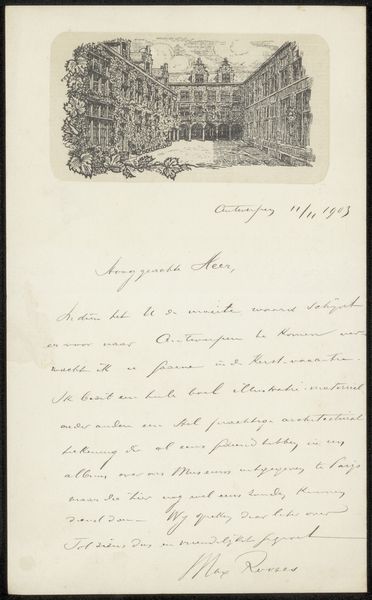
Watermolen te Vorden, op een brief aan Carel Vosmaer Possibly 1869
0:00
0:00
Dimensions: height 270 mm, width 215 mm
Copyright: Rijks Museum: Open Domain
Curator: This is Johannes Warnardus Bilders’ "Watermolen te Vorden, op een brief aan Carel Vosmaer," likely from 1869. It’s a pencil drawing currently residing here at the Rijksmuseum. Editor: My first thought is how dreamlike it seems. The mill and trees almost dissolve into the paper, blurring the lines between reality and memory. Is it drawn on an actual letter? Curator: Precisely! Bilders sketched it on a letter to Carel Vosmaer. I think this highlights the intimate relationship between the artist and his subject. It’s not a grand commission; it’s a personal communication. We often forget that art served many functions outside the grand public statement. Editor: It’s like a visual postcard. I imagine him pausing amidst his correspondence, captivated by the scene, compelled to capture it. This almost impromptu creation adds to its charm. You feel the spontaneity in the sketch's freedom, with light, quick strokes that almost breathe. Does this reveal his typical style? Curator: Yes and no. Bilders belonged to the Hague School, so he's very much known for his landscapes. You can definitely sense the Romantic sensibility, that fondness for the Dutch countryside, but even though we find that he worked mostly with landscapes, I would say this piece offers a glimpse into the artist's more introspective practice, where the personal and artistic blur. Editor: It speaks of a connection beyond just observing; it hints at a conversation, or a reflection of the artist’s own inner world reflected back by the image. The location certainly grounds this artwork, adding a biographical, deeply personal dimension. It moves beyond objective documentation, don't you think? Curator: Absolutely. Bilders' sketch is not simply a picture of a watermill, but rather an extension of his life. The choice of creating this on personal correspondence makes you question its intent – a token, a distraction? Perhaps a musing that deserved artistic recognition, something for posterity's sake. Editor: Seeing it that way really elevates a piece that would easily be considered "minor" – a simple sketch made from humble materials is ultimately something we all can relate to, that speaks of the universality of human experience in the artistic and reflective form. Curator: Agreed. I love finding these works, since these reveal as much of the art as of its creator and his life.
Comments
No comments
Be the first to comment and join the conversation on the ultimate creative platform.
